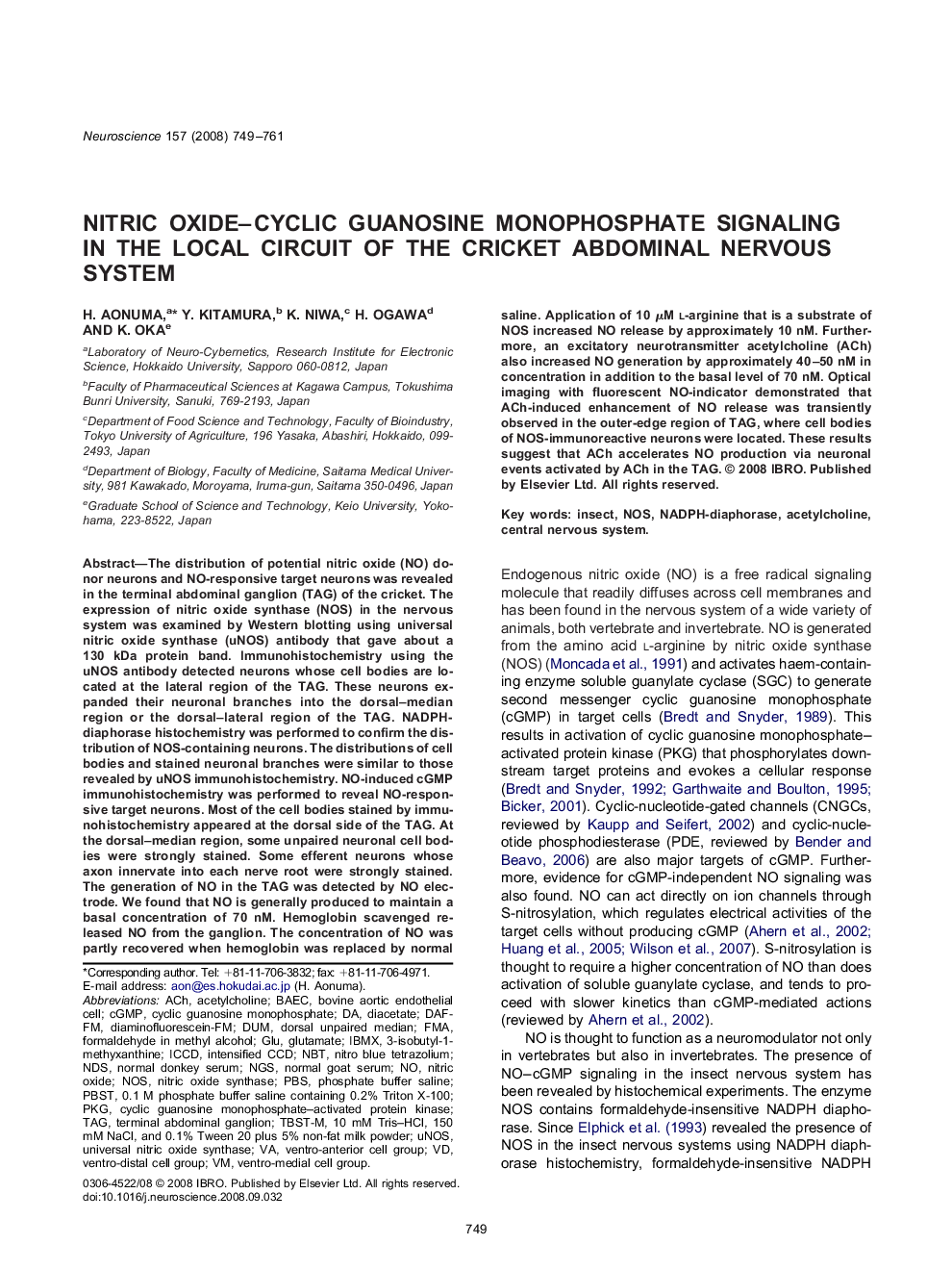| Article ID | Journal | Published Year | Pages | File Type |
|---|---|---|---|---|
| 4340032 | Neuroscience | 2008 | 13 Pages |
The distribution of potential nitric oxide (NO) donor neurons and NO-responsive target neurons was revealed in the terminal abdominal ganglion (TAG) of the cricket. The expression of nitric oxide synthase (NOS) in the nervous system was examined by Western blotting using universal nitric oxide synthase (uNOS) antibody that gave about a 130 kDa protein band. Immunohistochemistry using the uNOS antibody detected neurons whose cell bodies are located at the lateral region of the TAG. These neurons expanded their neuronal branches into the dorsal–median region or the dorsal–lateral region of the TAG. NADPH-diaphorase histochemistry was performed to confirm the distribution of NOS-containing neurons. The distributions of cell bodies and stained neuronal branches were similar to those revealed by uNOS immunohistochemistry. NO-induced cGMP immunohistochemistry was performed to reveal NO-responsive target neurons. Most of the cell bodies stained by immunohistochemistry appeared at the dorsal side of the TAG. At the dorsal–median region, some unpaired neuronal cell bodies were strongly stained. Some efferent neurons whose axon innervate into each nerve root were strongly stained. The generation of NO in the TAG was detected by NO electrode. We found that NO is generally produced to maintain a basal concentration of 70 nM. Hemoglobin scavenged released NO from the ganglion. The concentration of NO was partly recovered when hemoglobin was replaced by normal saline. Application of 10 μM l-arginine that is a substrate of NOS increased NO release by approximately 10 nM. Furthermore, an excitatory neurotransmitter acetylcholine (ACh) also increased NO generation by approximately 40–50 nM in concentration in addition to the basal level of 70 nM. Optical imaging with fluorescent NO-indicator demonstrated that ACh-induced enhancement of NO release was transiently observed in the outer-edge region of TAG, where cell bodies of NOS-immunoreactive neurons were located. These results suggest that ACh accelerates NO production via neuronal events activated by ACh in the TAG.
